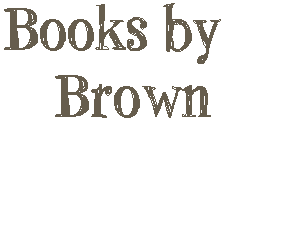Crowing: Great Reviews for Henry and the Cannons
School Library Journal:
STARRED REVIEW
Gr 1-4–As the American Revolution was getting underway, George Washington knew he needed cannons to defeat the British. Unfortunately, he was camped outside British-held Boston, and the nearest big guns were 300 miles away at Fort Ticonderoga, New York. They were thought to be impossible to retrieve, until Henry Knox agreed to try. Brown employs a light touch in telling this exciting true story. Moving 120,000 pounds of artillery in winter involved dragging the pieces, sailing, sledding, and even retrieving them from freezing water when the ice broke under their weight. Readers will be fascinated by the various methods employed to keep the cannons moving, including poles, ropes, and chains to help the sleds scale steep heights. Amazingly, Knox and his group arrived without losing a single piece of weaponry. Quotations integrated into the text are not directly attributed, but a bibliography is included. Watercolor illustrations are given weight by black outlines. A palette of blues, whites, and browns reinforces the winter tone. Full spreads interspersed with panels vary the pace and allow for certain images to be spotlighted. A nicely composed three-panel page shows the changing weather (clear to rain to snow) as Knox begins his quest. This entertaining tale will be great to use along with studies of George Washington and the Revolutionary War.–Lucinda
Snyder Whitehurst, St. Christopher’s School, Richmond, VA
The Horn Book:
In Let It Begin Here! (rev. 1/09), Brown described the start of the siege of Boston in April 1775, and in this picture book he depicts how that campaign ended eleven months later. Young bookseller Henry Knox’s mission to bring heavy cannon from forts on Lake Champlain provides the book with a pleasing narrative shape. Stylized watercolors heighten the drama and occasional humor of Knox’s trek without turning into cartoons. From the “relishing” meal Knox shared with Native Americans in New York to the 250 (mostly damaged) cannon the British military left behind, the text hews closely to the historical record—except for one important fact. Early on Brown states, “Washington ached for cannon…But Washington had none”; period documents show that the Continental Army had dozens of artillery-pieces around Boston. This common error didn’t originate with Brown but is an unfortunate exaggeration of an otherwise “true story.” Map; bibliography. j. l. bell
Kirkus:
The book’s trajectory is clearly laid out: A simple map traces an almost-300-mile path through the wilderness from Fort Ticonderoga in New York to Boston. The first line draws readers firmly into the past—“It was the winter of 1775”—and defines the problem: British soldiers occupy Boston, and the Americans have no way to dislodge them. Despite the seeming impossibility of transporting heavy cannons over snowy roads, across icy lakes and through forbidding forests, young Henry Knox, a bookseller and militia member, volunteered to get the job done. As he has in other informational picture books, Brown uses a variety of page layouts, including some sequential panels, to convey the action. Cool blues and icy whites evoke the wintry landscape; figures and faces are loosely drawn but ably express emotion and determination. Likewise, the brief text employs lyrical language to both get the basic facts across and communicate the feelings and experiences of Henry and his band of hardy helpers. Children intrigued by Brown’s succinct summary will want to follow up with Anita Silvey’s Henry Knox: Bookseller, Solider, Patriot, illustrated by Wendell Minor (2010).
Publishers Weekly:
This recounting of a dramatic wartime episode revisits the era Brown spotlighted in Let It Begin Here! In the winter of 1775, the British army occupied Boston while George Washington and his troops were relegated to the surrounding hills; the general “ached for cannons. With them, he could rain cannonballs on the British soldiers’ heads and drive them from Boston.” An unlikely hero emerges: Henry Knox, a bookseller who travels 300 miles to Fort Ticonderoga to acquire 59 cannons (Knox was also the subject of Anita Silvey and Wendell Minor’s 2010 picture book Henry Knox: Bookseller, Soldier, Patriot). Incorporating several quotations from Knox himself, Brown’s immediate account explains how Knox and his stalwart volunteers overcome hurdles on lake and land—including retrieving cannons that crash through the ice—to deliver the artillery to Boston. There, the cannons send 9,000 British soldiers fleeing, leaving behind (in an ironic twist) 250 of their own cannons. Rendered in pale browns and blues, Brown’s art has a gestural quality, emphasizing atmosphere and action over detail and succinctly sketching the proceedings in a way that echoes the fluid text. Ages 5–9. (Jan.)

0 Comments
No comments yet